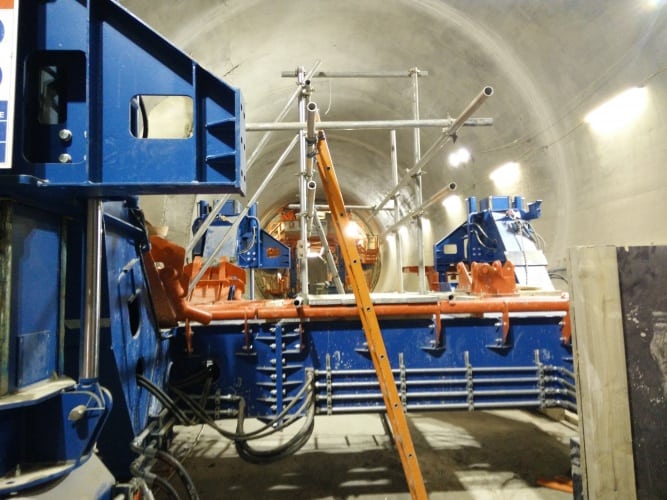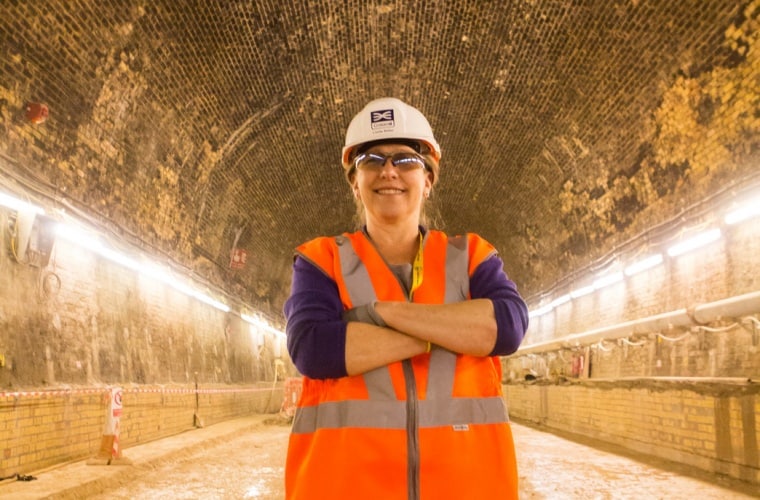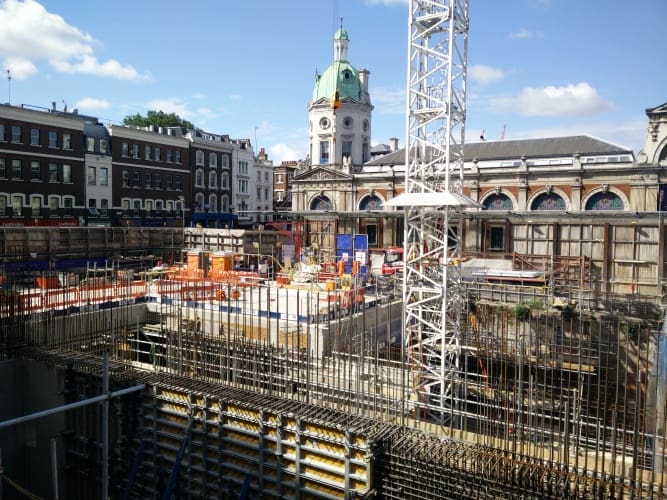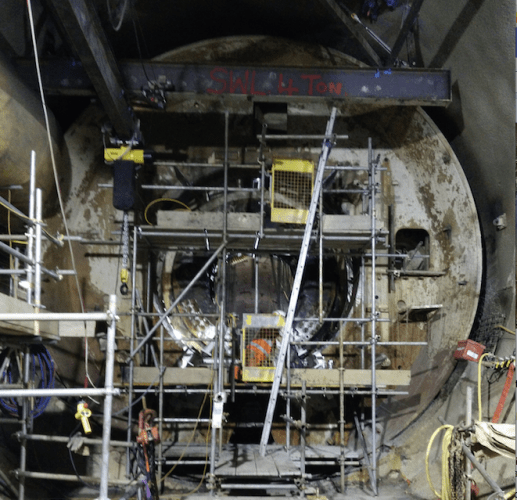Now that the rail tunnels are complete, work is underway in fitting out the stations, and track is already being laid. The central section of the line, which runs from Paddington to Abbey Wood, is due to open in December 2018.
Perhaps the most remarkable thing of all – and something that Crossrail’s workers speak of with great pride – is the fact that Europe’s biggest construction project has been taking place right beneath the feet of millions of Londoners, and many are not even aware of its existence. This is testament to how smoothly the tunnelling has progressed, and the level of detail and planning that has accompanied it.

Linda Miller, a project manager now overseeing work on one of Crossrail’s main hubs at Farringdon, speaks with genuine enthusiasm about such a massive undertaking going below the radar of so many people.
“The huge news for us here on Crossrail is that there’s been no news,” Miller told me and other assembled media on a recent site visit. “If I talk to my neighbours, or people at the school gate, they barely know Crossrail, and that is our huge and fantastic piece of news.”
It’s an achievement she attributes to a combination of factors, not least the investment in the eight giant tunnel boring machines (TBMs) which have gradually snaked their way under London for the past three years, often within inches of existing tunnels and sewers in the city’s crowded subterranean network.

“We bought what I consider to be the best machines in the world, honestly, and I’ve been doing tunnelling a long time,” she says. “We bought state of the art Herrenknecht machines, all eight of them, fabulously crafted, incredible high quality, and they drove with exacting precision like I’ve never experienced before – being in the right place where they were supposed to be to the millimetre.”
The TBMs cost in the region of £10m each, but by all accounts have been a worthwhile investment. Using terabytes of data gathered around the clock from sensors across key locations in the city - all crunched through a bespoke software system – Crossrail engineers have been able to guide the TBMs with extreme precision, constantly monitoring for problems in the surrounding earth and nearby infrastructure.
According to Miller, another key factor has been the investment in people. Learning from previous tunnelling projects where the right expertise has not always been present at the tunnel face, Crossrail invested in ensuring geo-technical engineers were on site continuously.
“Crossrail took that up and said, ‘you know what, this is gong to be expensive, but we’re actually going to get very highly qualified educated people, we’re going to pay for them to stand at the face of the tunnel and be on the construction site teams 24 hours a day, seven days a week, nights, weekends, Sundays’,” Miller explains.

The result has been a project that has so far come in on time and on budget, with barely a negative mention in the mainstream press. This is something that can’t always be said of marquee UK construction, with the Wembley redevelopment and Heathrow extensions recent examples of projects where things have not run quite so smoothly.
So what now of the eight TBMs that have been so integral to Crossrail’s success so far? Their mission now complete, most have already been disassembled, to be reused on other projects or sold on. At Farringdon, we were brought down to see TBM Elizabeth, which alongside TBM Victoria was responsible for the longest stretch of tunnelling - the 8.3km drive from Limmo Peninsula, near Canning Town, to Farringdon.
After making the final breakthrough in May, most of Elizabeth has already been removed. The 150m long body of the TBM is being recovered piece by piece, ferried back along the tunnel and brought to the surface at Stepney Green. Meanwhile, the 7.1m diameter cutting head is currently being broken up into manageable one to two ton pieces, and removed via the site at Farringdon.
“It’s a complicated piece of work,” explains Roger Mears, project manager on the eastern tunnels. “It’s taken about three months to remove everything from those TBMs. The actual cutting of the cutter heads only takes about three weeks, but removing the bearing takes another couple of weeks. And we’ve got the gantries then that form the train of that TBM, and they’re being pulled back to Stepney Green.”

The only thing that might be left behind is the can, the large outer cylinder of metal that houses the TBM. Mears tells me that there are even provisional plans to recover that via another tunnel, but that a final decision has yet to be made. In the meantime Mears, Miller and the rest of the Crossrail team are continuing their work, buoyed by the success to date, and excited by the challenges to come.
“I’ve been in construction on great big projects for 25 years, and I’ve never had as much fun, and loved it as much as I’ve loved this job,” says Miller.
“You can talk to any of our workforce out there and they will be bursting with pride. They get that they’re working on something meaningful, and challenging, and interesting, and as one of our young workers would say, ‘Epic’.”




April 1886: the Brunkebergs tunnel
First ever example of a ground source heat pump?